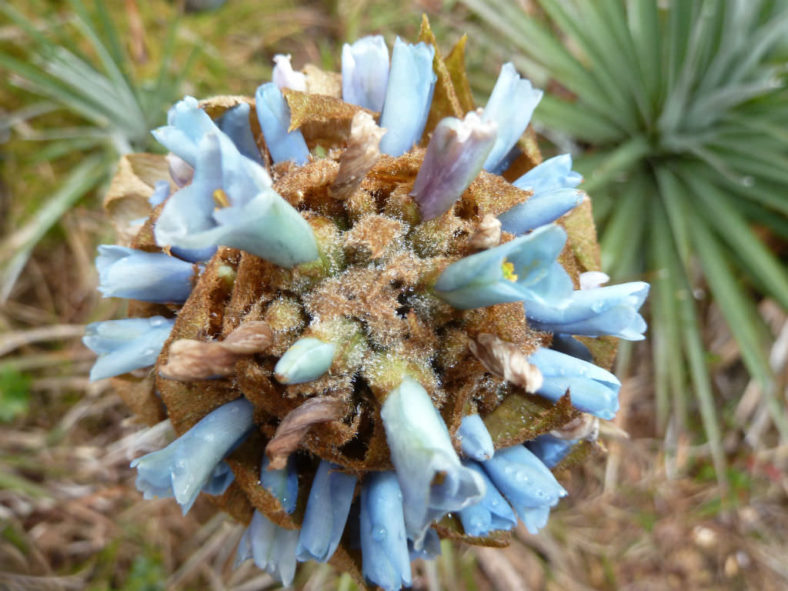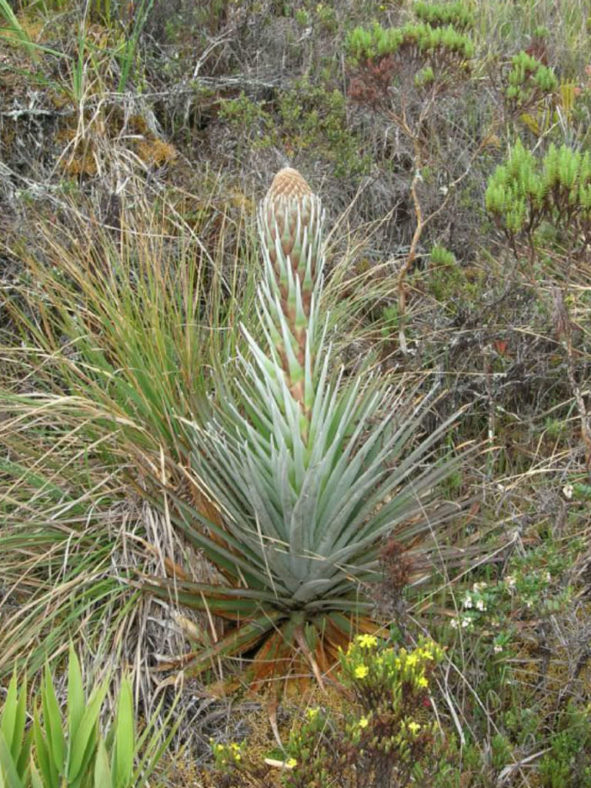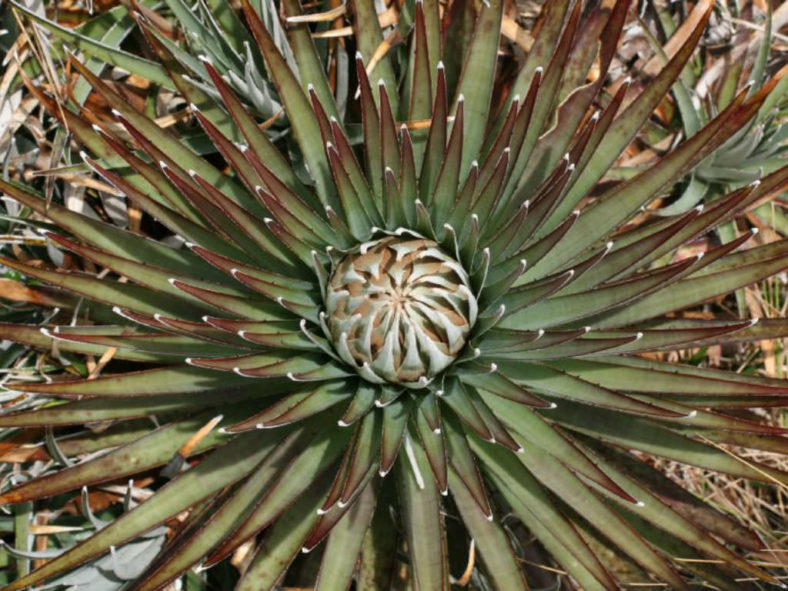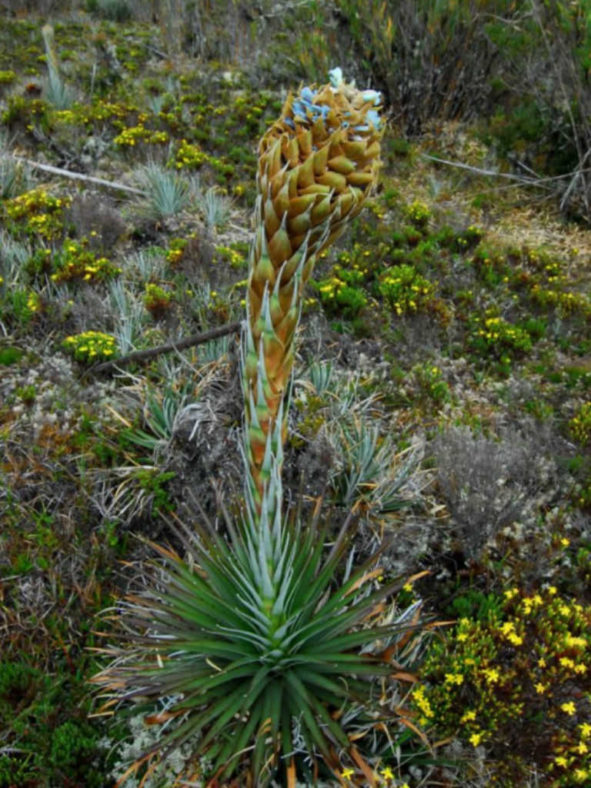Scientific Name
Puya dasylirioides Standl.
Scientific Classification
Family: Bromeliaceae
Subfamily: Pitcairnioideae
Genus: Puya
Origin
Puya dasylirioides is native to Costa Rica.
Flower
Color: Bright blue
Bloom Time: Summer
Description
Puya dasylirioides is a species unusual for a Puya, as the leaves have no spines along the leaf margins. It forms a rosette of smooth, up to 2 feet (60 cm) long, leathery leaves with powdery-blue undersides. It multiplies readily with pups, eventually forming a large colony. This odd Bromeliad blooms throughout the summer with an impressive up to 7 foot (2.1 m) tall flower stalk lined with bright blue flowers. It blooms unusually young for Puya species, at just 4 to 5 years.

Hardiness
USDA hardiness zone 9a to 11b: from 20 °F (−6.7 °C) to 50 °F (+10 °C).
How to Grow and Care
You can get Blue Puya seed and start the plants yourself in a greenhouse. Puya is slow to germinate and requires at least 70 °F (21 °C). Use well-drained potting soil in a seed flat. Keep the seeds moderately moist until they sprout. Once you see seedlings, move the flat to a brightly lit area with protection from midday harsh light.
Transplant the seedlings when they have formed a rosette. Plants can tolerate a crowded pot. In USDA zones 8 to 11, you can transplant rosettes to the garden, but they will have to be moved indoors in winter in other zones. Blue Puya makes a great patio specimen until the cold temperatures appear.
Water Puya plants in the ground once per week in summer. Potted plants should be watered when the top couple of inches of soil have dried out. Water the plant only once per month in winter when the plant is dormant. Fertilize with diluted succulent food or indoor plant food in spring. Remove spent foliage from the rosettes for the best appearance.
See more at How to Grow and Care for Blue Puya.
Links
- Back to genus Puya
- Plantpedia: Browse flowering plants by Scientific Name, Common Name, Genus, Family, USDA Hardiness Zone, or Origin
Photo Gallery
Click on a photo to see a larger version.




